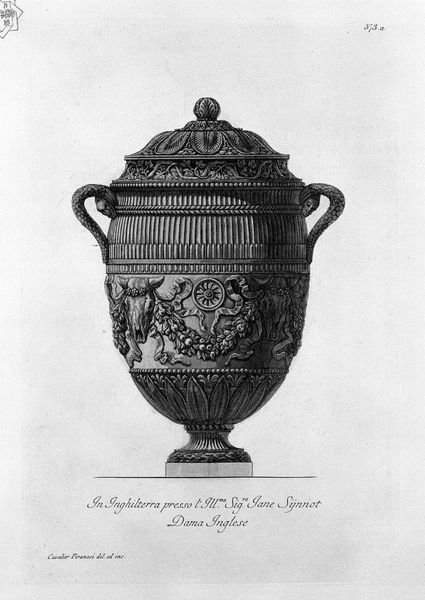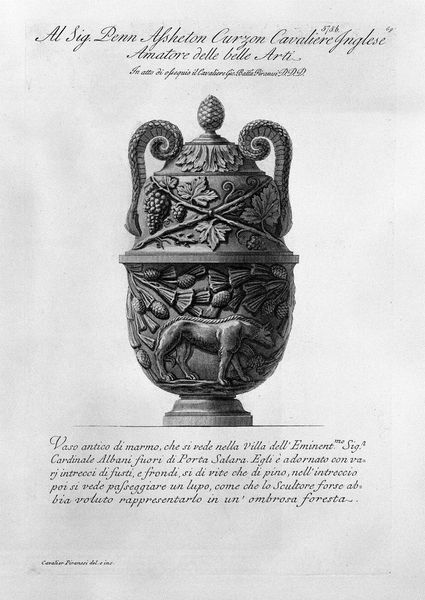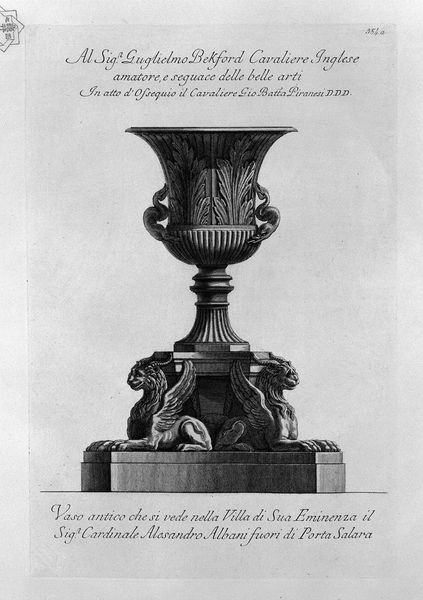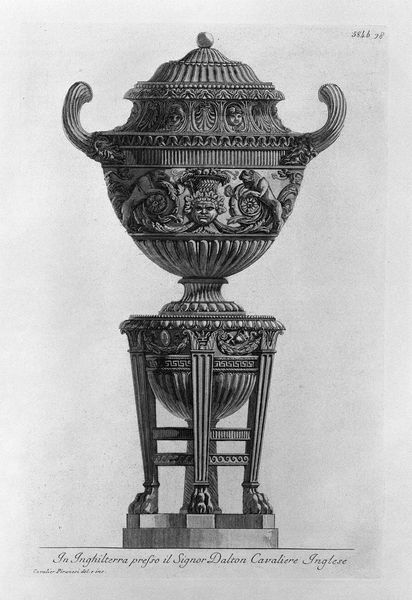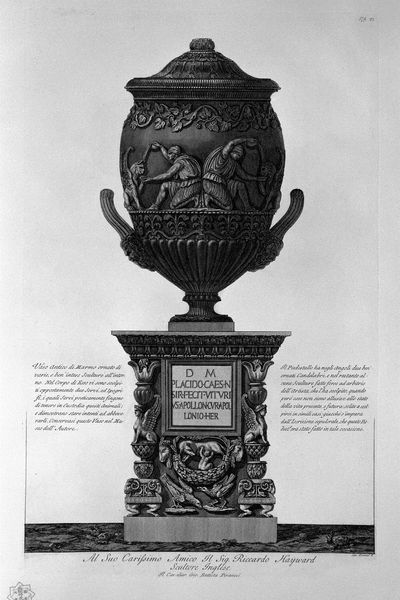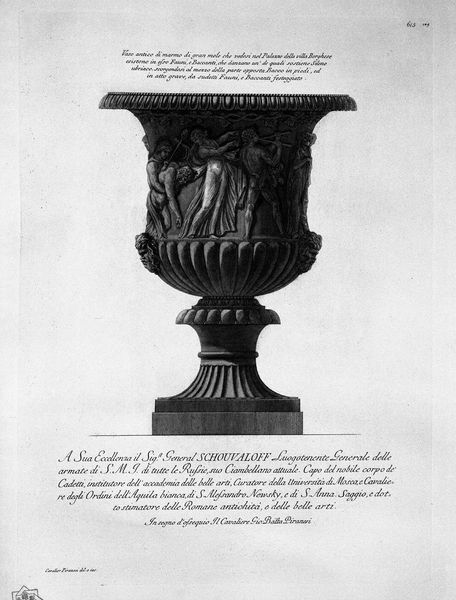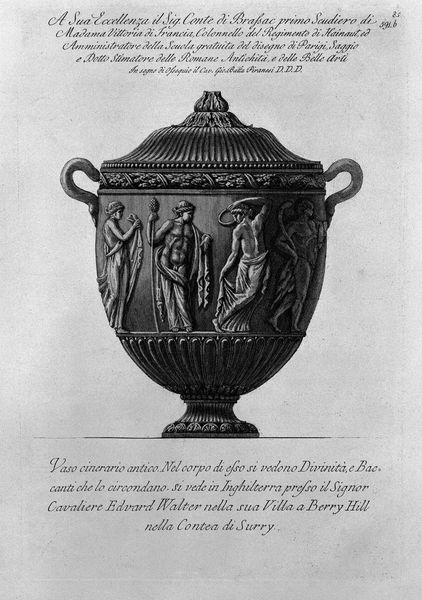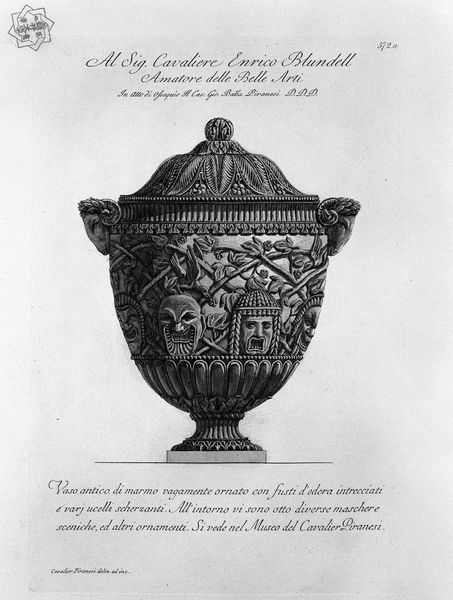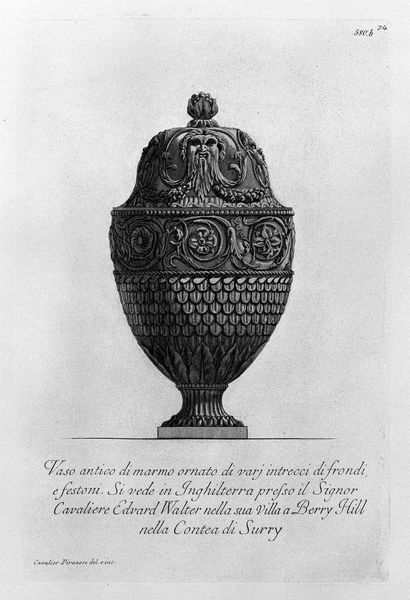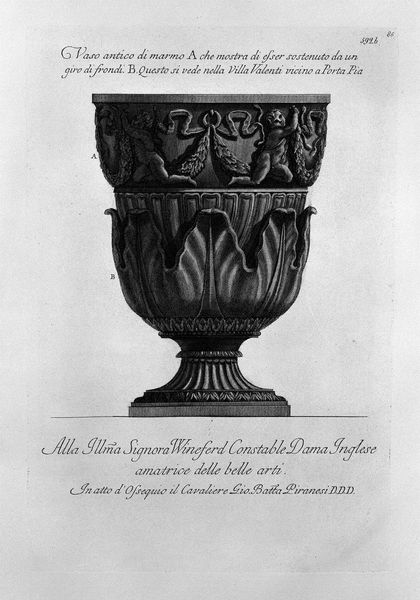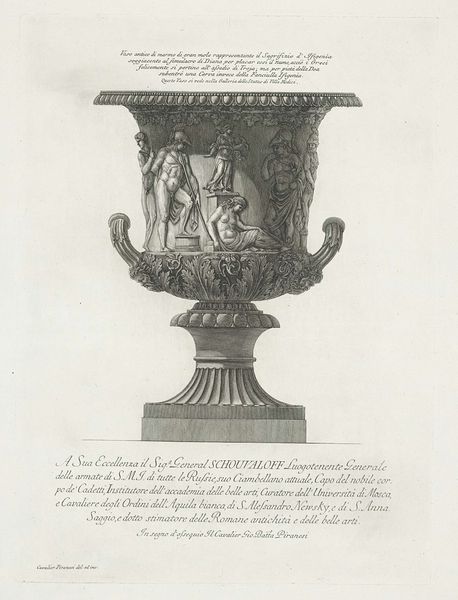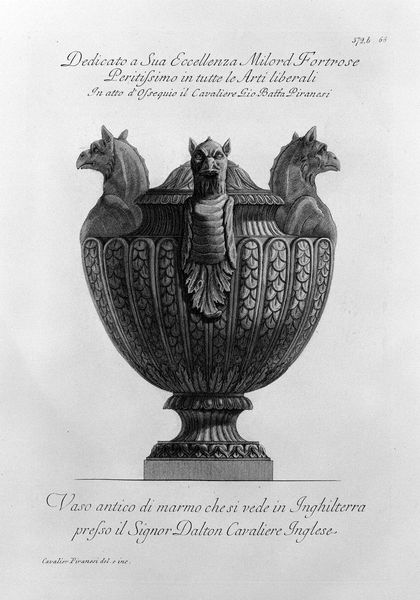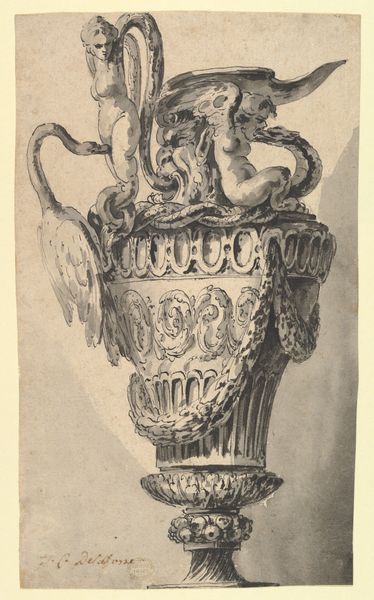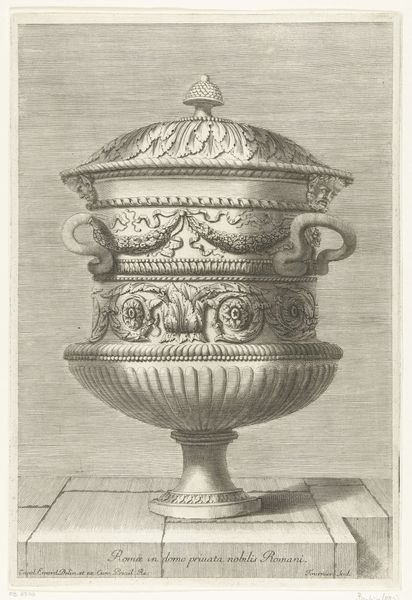
Terracotta urn vase you see in the collection of drawings of Cavalier Ghezzi in the Vatican Library
0:00
0:00
drawing, print, etching, graphite, engraving
#
drawing
# print
#
etching
#
old engraving style
#
pencil drawing
#
ancient-mediterranean
#
graphite
#
graphite
#
engraving
Copyright: Public domain
Curator: Oh, I find myself drawn to this print by Giovanni Battista Piranesi. It's called "Terracotta urn vase you see in the collection of drawings of Cavalier Ghezzi in the Vatican Library." A mouthful, I know! Editor: My first thought? This feels like peering into a dream, or perhaps the depths of some forgotten god's imagination. There’s a sense of ornate fantasy. Curator: Piranesi, using etching, engraving and graphite, captured a decorative vase, it seems with meticulous precision, pulling it from a sketchbook he encountered. What I find striking is that he’s documenting another artist’s rendering. Editor: Yes, it's art *about* art, layered through time and perspective. That chimera – a horse’s body with a ram's head and a woman's face! It is rich in symbols and metaphors for transformation and our internal paradoxes. Are we seeing different stages of being layered together? Curator: Precisely! That layering, for me, is part of the emotional hook. The vessel's base transforms into a bull's head. Its surface, an evolving narrative in its menagerie of imagery that culminates into a watchful lion atop the urn's lid, all signs of virility and royalty. The symbolic density is striking. Editor: Exactly, all ancient and powerful. Consider how these forms, born from terracotta, themselves echo the cycle of life – dust to dust. It is holding cremated remains as it is actively displaying potent life-affirming figures. Curator: Good point! We, today, may not fully grasp the specific cultural language of this urn’s design, but the sense of history, mortality, and potent imagery transcends. We find ourselves wanting to decipher meaning, and yet we also recognize this imagery connects to us through shared anxieties and ideas regarding what it means to live a full, creative, even celebrated life. Editor: Ultimately, I think that Piranesi has left us with not just an image of a vase but an invitation to reflect on our own stories of identity and what symbols we each personally carry and cherish. Curator: Absolutely. What was once simply observed and carefully illustrated continues to be fertile ground for contemporary contemplation.
Comments
No comments
Be the first to comment and join the conversation on the ultimate creative platform.
